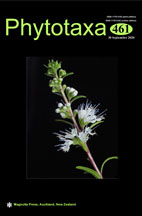Abstract
Japewia aliphatica is described as a new species. It is characterized by the usually brown, often areolate, blastidiate to sorediate-blastidiate, rarely fertile thallus containing unknown fatty acid(s). It grows on acidic bark of broad-leaved trees in mainly in montane forests, and is known from Austria, the Czech Republic, Germany, Norway, Russia (European part of the Caucasus), Slovakia and Ukraine. The new species is well characterized by its morphological, chemical and molecular (nrITS, mtSSU) traits. Systematic placement of Japewia is briefly discussed and its position within Lecanoraceae confirmed.

